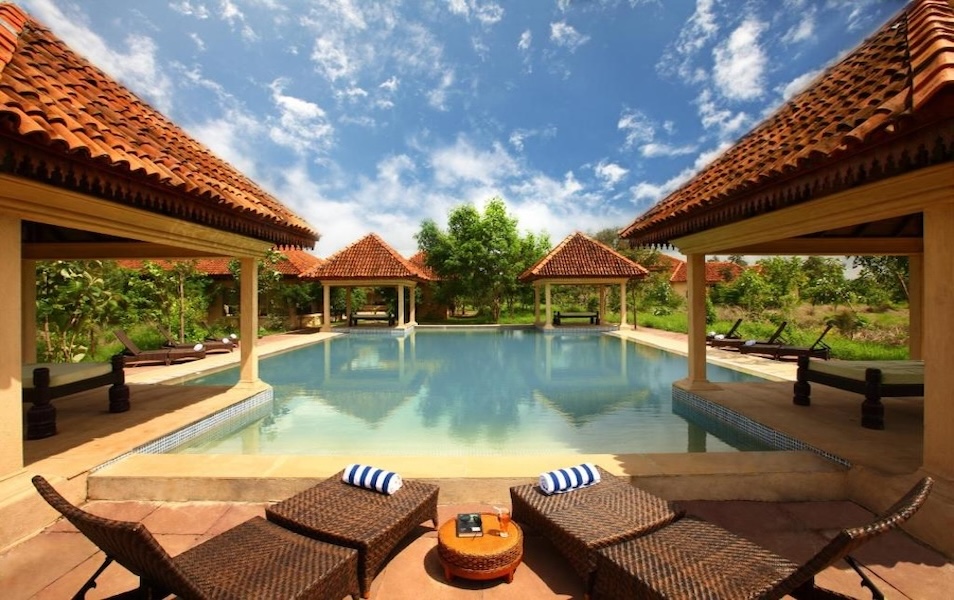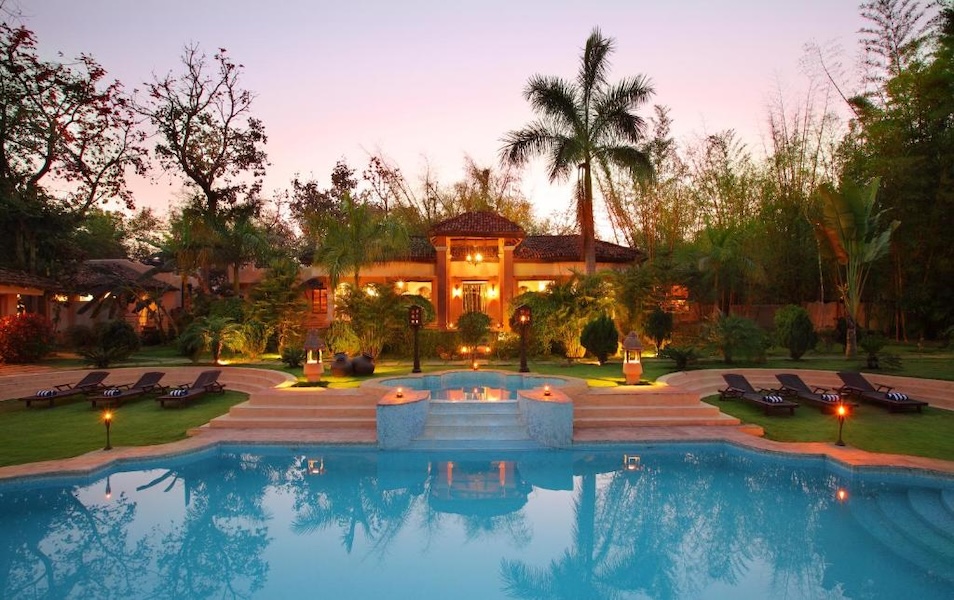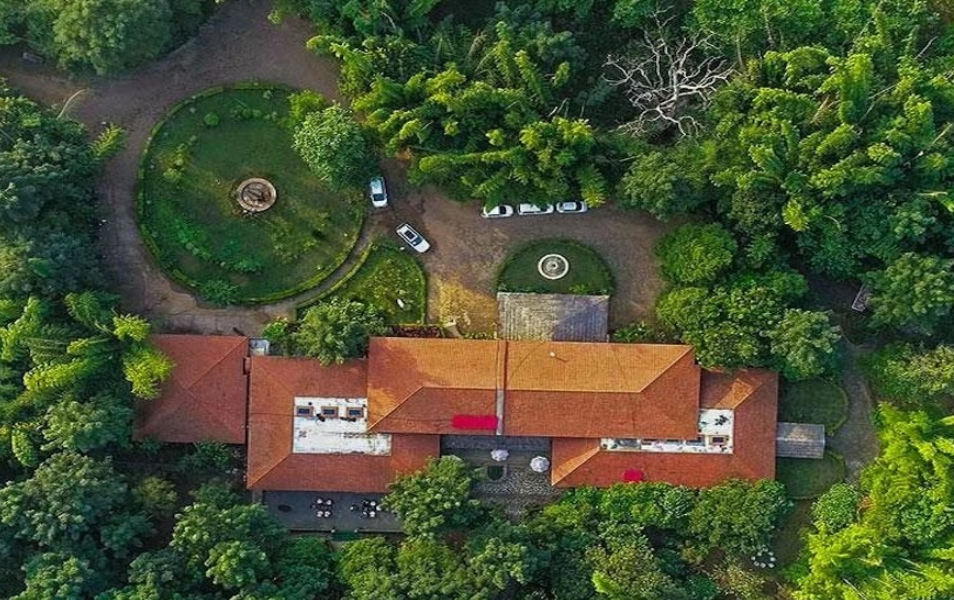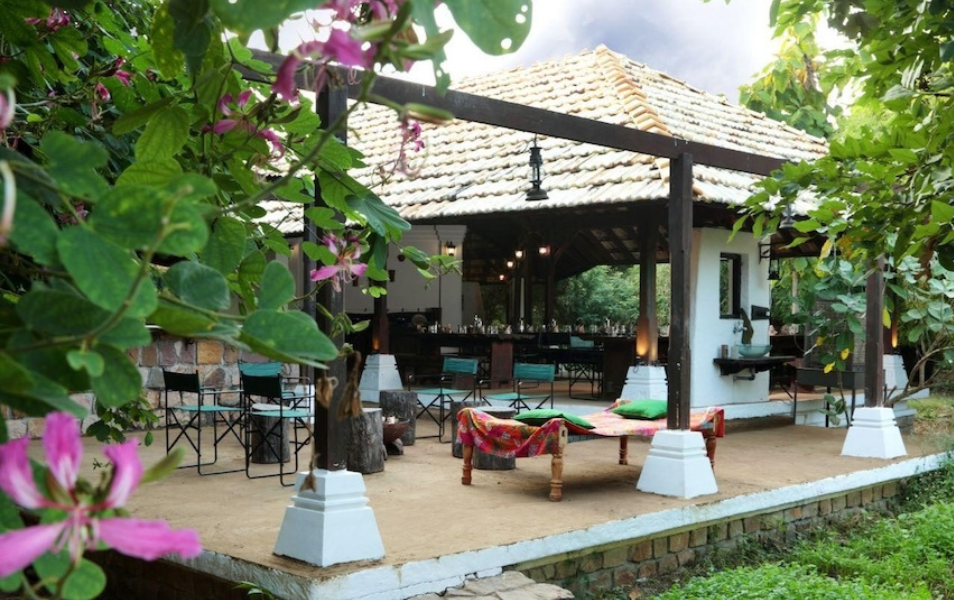COUNTTY: India PHOTOTYPR: Wildlife LENGHT: 15 days DATES: April 3-17 2027 NUMBER OF PARTICIPANTS: 8-12
Join me on an exciting journey filled with tiger photography in four of India’s finest tiger reserves: Bandhavgarh, Kasha, Tardoba and Peach. These parks offer the best possible conditions for photographing tigers — and we travel in April, when the heat often drives the tigers to the waterholes to cool off.
Tom Svensson
This is the ultimate tiger expedition. For the first time, you have the opportunity to visit four of India’s premier tiger parks — Bandhavgarh, Kanha, Tadoba, and Pench — all on the same journey in search of the iconic Bengal tiger. And all of it under the guidance of wildlife photographer Tom Svensson.
The cameras never rest long in our laps. We might stop for a moment to capture a troop of langurs that, with acrobatic precision, swing from branch to branch while the sun’s rays filter through the dense foliage trembling from their movement. The light is soft, the shadows dance — perfect conditions for freezing motion in a dynamic wildlife portrait.
Suddenly, the jungle’s symphony is broken by a loud alarm call. The birds fall silent. The jungle’s pulse shifts. It’s a sambar deer — alert, motionless — and its short, repeated calls can mean only one thing: a tiger is near.
We start the jeep. Camera settings are adjusted quickly — shutter speed, aperture, ISO — as adrenaline rises in rhythm with the sound moving through the thick undergrowth. Eyes dart, lenses are aimed, and the silence inside the jeep is absolute. We know that every second counts.
Then — out of what seemed like empty air — she appears. A tigress, powerful and graceful, glides onto the road ahead. She stops. Looks around. Her gaze meets ours, but she remains unbothered. Slowly, she begins to walk — straight toward us. The cameras chatter, but in that moment, it feels as if time stands still. The light falls perfectly across her face, her striped coat glowing in the heat. It’s a photographic moment we will not soon — perhaps never — forget.
The journey is more than just safari drives — it’s a photographic immersion where we combine action-filled adventures with learning. We listen to inspiring talks by Tom, take part in shared image reviews with constructive and insightful feedback, and you receive personal guidance out in the field — all in the heart of the Indian jungle that once inspired Rudyard Kipling’s The Jungle Book.
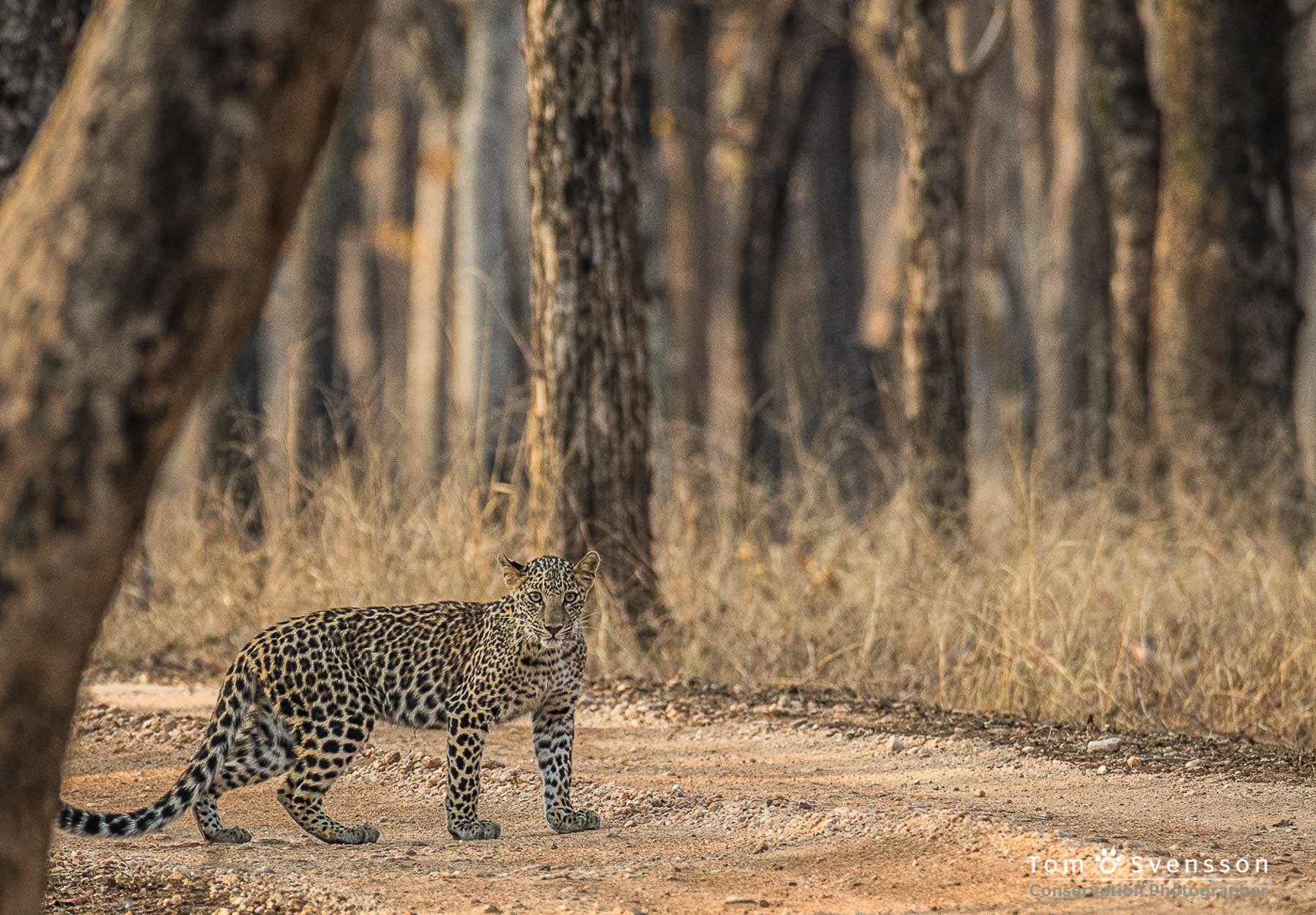
TOUR HIGHLIGTS
- Four of India’s premier parks for tiger photography.
- We travel in April, when the chances of seeing tigers are at their peak.
- A total of 23 safaris across four national parks.
- Bandhavgarh – India’s densest tiger territory.
- Tadoba – rich wildlife and diverse landscapes.
- A chance to photograph leopards in Pench.
- Kanha’s beautiful surroundings that inspired Kipling’s The Jungle Book.
- Participation throughout the journey by wildlife photographer Tom Svensson.
- Photographic guidance and constructive image critique by Tom Svensson.
COUNTTY: India PHOTOTYPR: Wildlife LENGHT: 15 days DATES: April 3-17 2027 NUMBER OF PARTICIPANTS: 8-12
Join me on an exciting journey filled with tiger photography in four of India’s finest tiger reserves: Bandhavgarh, Kasha, Tardoba and Peach. These parks offer the best possible conditions for photographing tigers — and we travel in April, when the heat often drives the tigers to the waterholes to cool off.
Tom Svensson
This is the ultimate tiger expedition. For the first time, you have the opportunity to visit four of India’s premier tiger reserves — Bandhavgarh, Kanha, Tadoba, and Pench — all on the same journey in search of the iconic Bengal tiger. And all of it under the guidance of wildlife photographer Tom Svensson.
The cameras never rest long in our laps. We might stop for a moment to capture a troop of langurs that, with acrobatic precision, swing from branch to branch while the sun’s rays filter through the dense foliage trembling from their movement. The light is soft, the shadows dance — perfect conditions for freezing motion in a dynamic wildlife portrait.
Suddenly, the jungle’s symphony is broken by a loud alarm call. The birds fall silent. The jungle’s pulse shifts. It’s a sambar deer — alert, motionless — and its short, repeated calls can mean only one thing: a tiger is near.
We start the jeep. Camera settings are adjusted quickly — shutter speed, aperture, ISO — as adrenaline rises in rhythm with the sound moving through the thick undergrowth. Eyes dart, lenses are aimed, and the silence inside the jeep is absolute. We know that every second counts.
Then — out of what seemed like empty air — she appears. A tigress, powerful and graceful, glides onto the road ahead. She stops. Looks around. Her gaze meets ours, but she remains unbothered. Slowly, she begins to walk — straight toward us. The cameras chatter, but in that moment, it feels as if time stands still. The light falls perfectly across her face, her striped coat glowing in the heat. It’s a photographic moment we will not soon — perhaps never — forget.
The journey is more than just safari drives — it’s a photographic immersion where we combine action-filled adventures with learning. We listen to inspiring talks by Tom, take part in shared image reviews with constructive and insightful feedback, and you receive personal guidance out in the field — all in the heart of the Indian jungle that once inspired Rudyard Kipling’s The Jungle Book.

TOUR HIGHLIGTS
- Four of India’s premier parks for tiger photography.
- We travel in April, when the chances of seeing tigers are at their peak.
- A total of 23 safaris across four national parks.
- Bandhavgarh – India’s densest tiger territory.
- Tadoba – rich wildlife and diverse landscapes.
- A chance to photograph leopards in Pench.
- Kanha’s beautiful surroundings that inspired Kipling’s The Jungle Book.
- Participation throughout the journey by wildlife photographer Tom Svensson.
- Photographic guidance and constructive image critique by Tom Svensson.
NATIONALPARKER
DESTINATION
KANHA NATIONAL PARK
Kanha National Park in Madhya Pradesh forms the core of the Kanha Tiger Reserve, established in 1974 under Project Tiger.
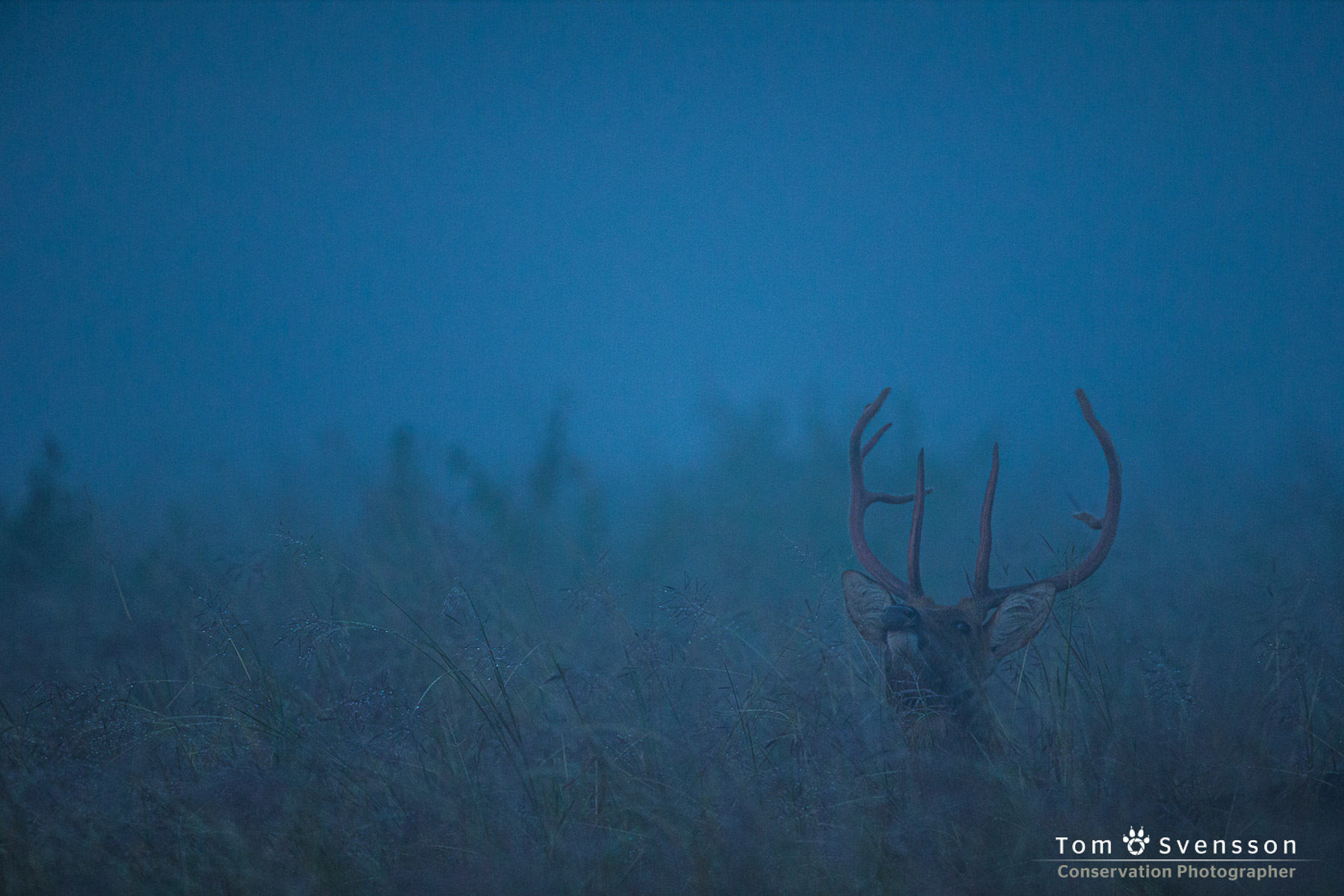
PENCH NATIONAL PARK
Pench National Park is located in the state of Madhya Pradesh and takes its name from the Pench River, which flows through the park from north to south. The park’s diverse terrain — a mix of open meadows, dense forests, and rocky outcrops — creates an ideal habitat for a wide range of wildlife, not least the elusive leopard.
The main attraction in Pench, however, is — as in several other national parks in central India — the Bengal tiger. The park is also home to the jungle cat, leopard, wild dog (dhole), wild boar, sloth bear, Indian bison (gaur), several species of deer, numerous monkeys, and more than 210 species of birds.
In addition, over 1,200 plant species have been recorded within the park’s boundaries — including several rare and endangered species, as well as plants of ethnobotanical significance.
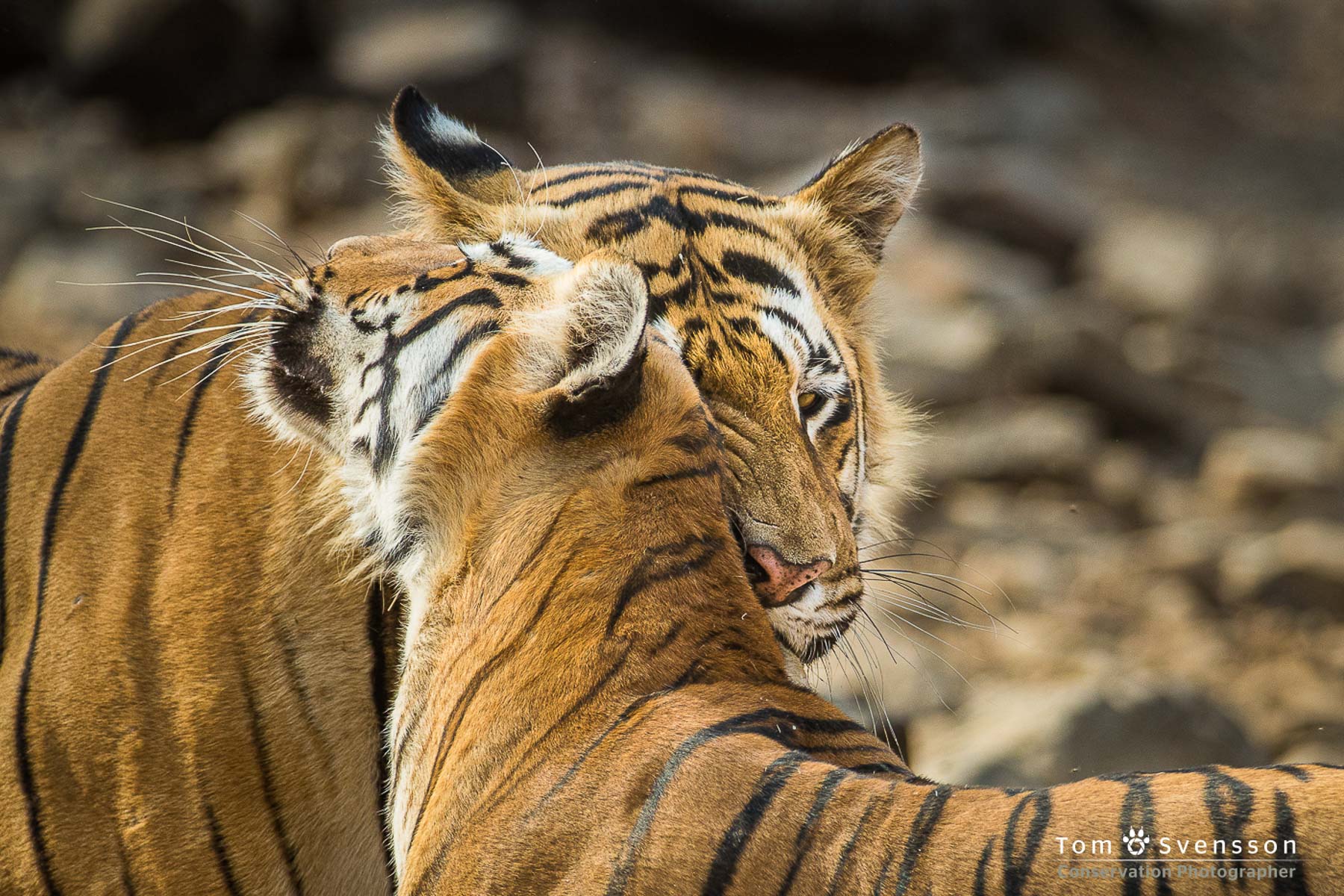
BANDHAVGARH NATIONAL PARK
Nestled in the rolling forested hills of Madhya Pradesh, Bandhavgarh is one of India’s most famous national parks. Since 1968, this protected area has served as a sanctuary for the Bengal tiger — and it is here that you have the greatest chance to see (and photograph) this iconic predator in the wild.
The park’s dramatic landscape — with dense jungle, open grasslands, and ancient ruins — provides ideal conditions for abundant wildlife. In addition to tigers, you may encounter leopards, sloth bears, jackals, and mongooses, as well as a rich birdlife with over 250 recorded species.
Bandhavgarh is a place where every safari offers new photographic opportunities — sometimes lasting only seconds, but always unforgettable.
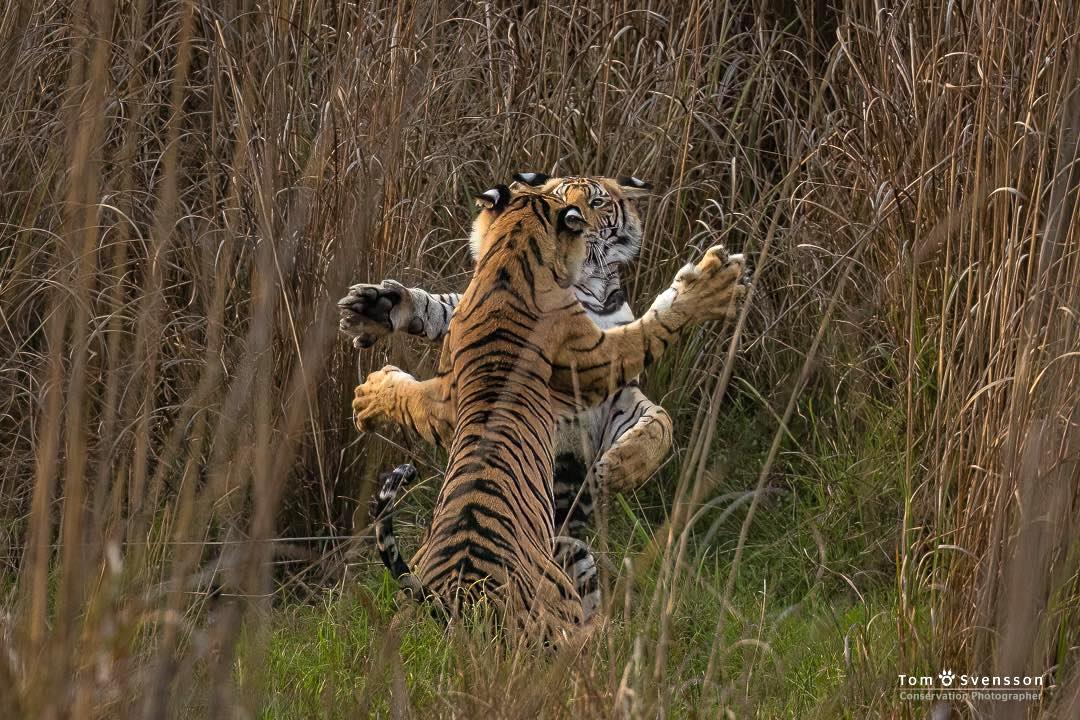
TADOBA NATIONAL PARK
Tadoba–Andhari Tiger Reserve, located in the state of Maharashtra, is one of India’s most renowned and accessible tiger reserves. It is a place where you truly have the chance to experience the Bengal tiger in its natural habitat — often at remarkably close range.
Part of the larger Project Tiger, Tadoba is known for its stable tiger population. The landscape is a photographer’s dream, constantly shifting between dense forests, dry grasslands, savanna-like clearings, and natural waterholeswhere wildlife gathers during the hotter hours of the day. This diversity creates ideal conditions for photography, whether your focus is on big predators, birdlife, or evocative environmental scenes.
In addition to tigers, there are excellent opportunities to photograph leopards, gaur (Indian bison), wild boar, spotted deer (chital), sambar deer, sloth bears, and jackals. The park’s birdlife is rich and varied, with numerous species of raptors, waders, and vibrantly colored tropical birds — a delight for both the eye and the camera.
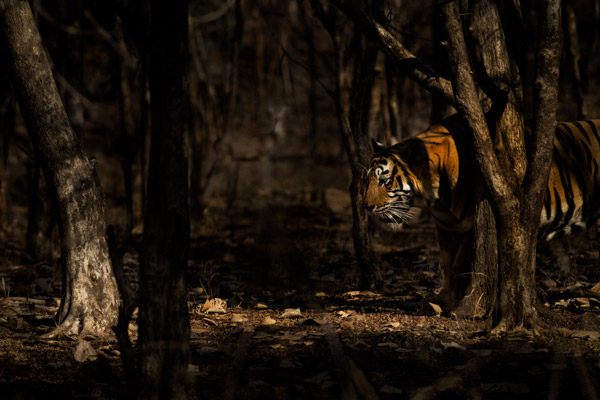
Learn more about Pench, Kanha, and Bandhavgarh National Parks — home to tigers, leopards, sloth bears, and much more.
PENCH NATIONAL PARK
Pench National Park is located in the state of Madhya Pradesh and takes its name from the Pench River, which flows through the park from north to south. The park’s diverse terrain — a mix of open meadows, dense forests, and rocky outcrops — creates an ideal habitat for a wide range of wildlife, not least the elusive leopard.
The main attraction in Pench, however, is — as in several other national parks in central India — the Bengal tiger. The park is also home to the jungle cat, leopard, wild dog (dhole), wild boar, sloth bear, Indian bison (gaur), several species of deer, numerous monkeys, and more than 210 species of birds.
In addition, over 1,200 plant species have been recorded within the park’s boundaries — including several rare and endangered species, as well as plants of ethnobotanical significance.

KANHA NATIONAL PARK
Kanha National Park in Madhya Pradesh forms the core of the Kanha Tiger Reserve, established in 1974 under Project Tiger.
Thanks to strict conservation programs protecting the park’s flora and fauna, Kanha is today regarded as one of the best-managed national parks in all of Asia.
Here, there are excellent opportunities to encounter a rich variety of wildlife — including numerous species of birds, monkeys, deer, and wild dogs — and, of course, the park’s pride: the Bengal tiger. With a bit of luck, you may even catch a glimpse of the elusive leopard.
No visit to Kanha is complete without a stop at Bamni Dadar, better known as Sunset Point, where you’re treated to a magnificent sunset over the landscape, often accompanied by grazing sambar deer and the impressive gaur (Indian bison).
For those who didn’t know — it was Kanha National Park that inspired Rudyard Kipling to write the classic tale The Jungle Book.
TADOBA NATIONAL PARK
Tadoba–Andhari Tiger Reserve, located in the state of Maharashtra, is one of India’s most renowned and accessible tiger reserves. It is a place where you truly have the chance to experience the Bengal tiger in its natural habitat — often at remarkably close range.
Part of the larger Project Tiger, Tadoba is known for its stable tiger population. The landscape is a photographer’s dream, constantly shifting between dense forests, dry grasslands, savanna-like clearings, and natural waterholeswhere wildlife gathers during the hotter hours of the day. This diversity creates ideal conditions for photography, whether your focus is on big predators, birdlife, or evocative environmental scenes.
In addition to tigers, there are excellent opportunities to photograph leopards, gaur (Indian bison), wild boar, spotted deer (chital), sambar deer, sloth bears, and jackals. The park’s birdlife is rich and varied, with numerous species of raptors, waders, and vibrantly colored tropical birds — a delight for both the eye and the camera.

BANDHAVGARH NATIONAL PARK
Nestled in the rolling forested hills of Madhya Pradesh, Bandhavgarh is one of India’s most famous national parks. Since 1968, this protected area has served as a sanctuary for the Bengal tiger — and it is here that you have the greatest chance to see (and photograph) this iconic predator in the wild.
The park’s dramatic landscape — with dense jungle, open grasslands, and ancient ruins — provides ideal conditions for abundant wildlife. In addition to tigers, you may encounter leopards, sloth bears, jackals, and mongooses, as well as a rich birdlife with over 250 recorded species.
Bandhavgarh is a place where every safari offers new photographic opportunities — sometimes lasting only seconds, but always unforgettable.
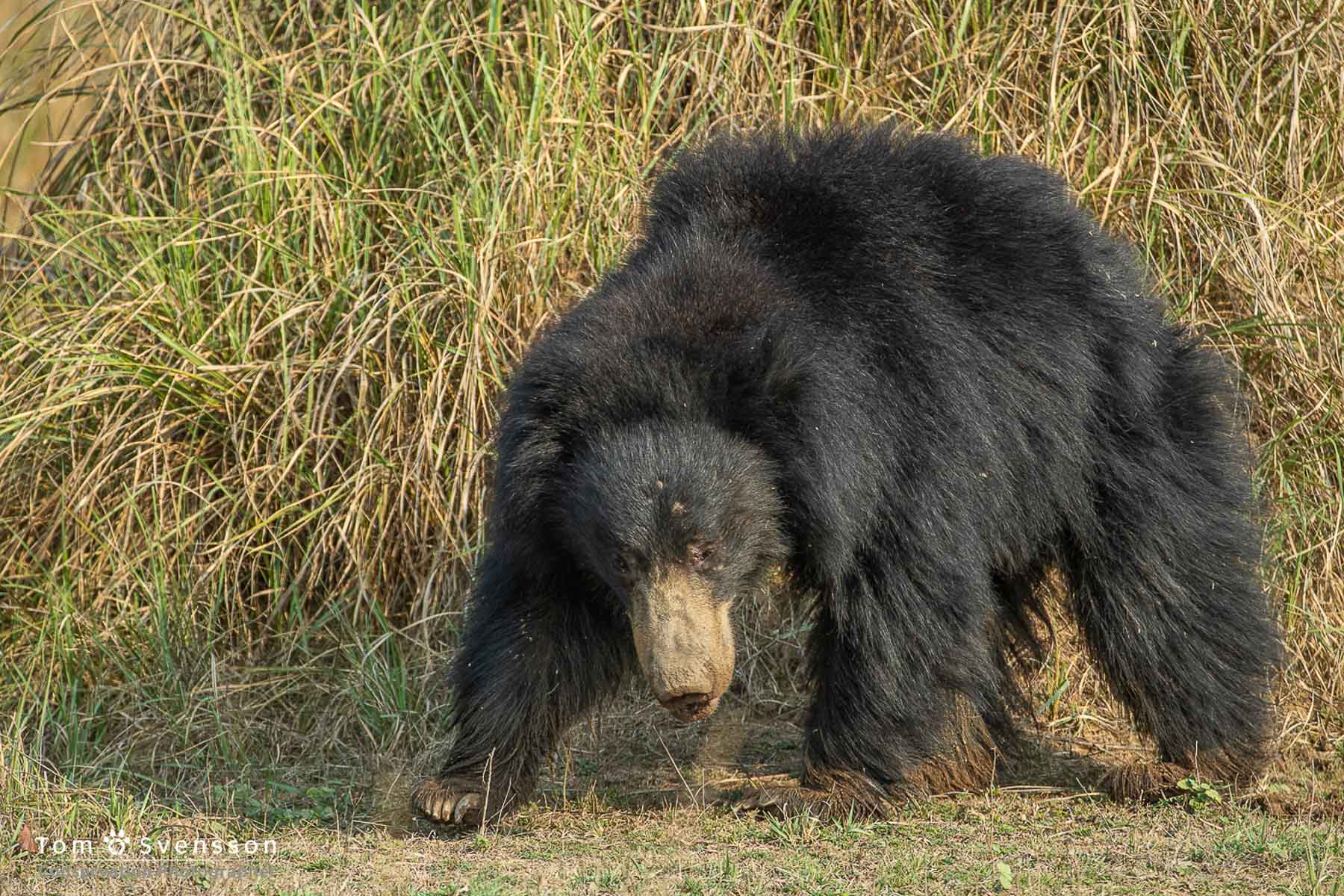
ITINERARY
ITINERARY
3-17 APRIL, 2027
DAY 1 (April 3) – ARRIVAL IN DELHI
During the day, you’ll arrive in Delhi and check in at the first-class Hotel Pride Plaza. The rest of the day is at leisure. In the evening, we gather for a welcome dinner in the hotel restaurant. (D)
DAY 2 (April 4) – TADOBA NATIONAL PARK
Early in the morning, we fly to Nagpur, followed by a scenic drive to Tadoba National Park. After check-in, it’s time for our first safari of the trip. We are introduced to Tadoba’s beautiful landscape, which over the coming days will offer countless photo opportunities and unforgettable wildlife encounters. In the evening, we share a group dinner, reflecting on our first impressions of the Jungle Book world. (B, L, D)
DAY 3–4 (April 5–6) – SAFARI IN TADOBA NATIONAL PARK
Two thrilling days await, filled with safari adventures in one of India’s best tiger reserves. We enjoy morning and afternoon safaris, with great chances of seeing and photographing tigers. The reserve offers dense forests, open grasslands, and shimmering lakes – a paradise for both wildlife and photographers. Leopards, wild dogs, deer, gaur, monkeys, and over 200 bird species also roam these lands. (B, L, D)
DAY 5 (April 7) – MORNING SAFARI & TRANSFER TO PENCH
After one last safari in Tadoba, we continue our journey to Pench National Park. During the drive through the Indian countryside, keep your cameras ready – subjects can appear at any moment. In the afternoon, we check in at the first-class Tuli Tiger Corridor. There’s time for photo editing and review of our first images. Tom will be available for advice and preparation before the next safaris. (B, L, D)
DAY 6–7 (April 8–9) – SAFARI IN PENCH NATIONAL PARK
With excitement in the air, we pass through the gates of Pench National Park. The rolling landscape, cool morning air, and light filtering through the trees create magical photographic conditions. Keep your eyes open — perhaps a leopard is basking in the sun or a tiger moves along the slopes.
After the morning safari, there’s time to relax by the pool or edit photos before lunch. In the afternoon, we set out again — always ready for the jungle’s secrets. Maybe we’ll see a tigress with her cubs emerging from the shadows — a moment to cherish for life. Evenings end with dinner and, if time allows, image review sessions. (B, L, D)
DAY 8 (April 10) – MORNING SAFARI & TRANSFER TO KANHA
After another morning safari, we continue to Kanha National Park. The drive takes us through a lively landscape full of photographic opportunities. After check-in at our lodge, the afternoon is dedicated to photo editing and review of images from Pench. Tom shares valuable tips and guidance ahead of the coming days of photography in Kanha’s unique environments. (B, L, D)
DAY 9–10 (April 11–12) – SAFARI IN KANHA NATIONAL PARK
Early each morning, we head out for safari in Kanha, one of India’s most beautiful and diverse reserves. Here we may encounter spotted deer, langurs, gaur, and — with a bit of luck — the Bengal tiger. The sunrise over the open meadows, the sal forests bathed in soft morning light — it’s every nature photographer’s dream. Tom is with us throughout, sharing his expertise on animal behavior and how best to capture those fleeting moments.
After the morning safari, we rest, enjoy lunch, and perhaps take a swim before heading out again. The afternoon safarioffers golden light — perfect for tiger photography. We might even spot the elusive sloth bear. (B, L, D)
DAY 11 (April 13) – TRANSFER TO BANDHAVGARH NATIONAL PARK
We begin the day with one last safari in Kanha before traveling onward to our final destination: Bandhavgarh National Park — known as one of India’s most tiger-dense areas.
After check-in at our lodge, we review our growing collection of images. Tom demonstrates how to further enhance photos using Lightroom. The day ends with dinner, accompanied by the sounds of the jungle. (B, L, D)
DAY 12–14 (April 14–16) – SAFARI IN BANDHAVGARH NATIONAL PARK
In the crisp morning air, we drive through the gates of Bandhavgarh. Together with Tom and our experienced drivers, we search for tracks, footprints, and alarm calls — anything that might lead us to a tiger. Photo opportunities abound. Perhaps we’ll encounter a troop of langurs swinging through the trees, or hear a sambar deer’s warning call breaking the silence — a sure sign a tiger is near.
And then — out of nowhere — a tigress steps onto the road ahead of us. She moves calmly, confidently. Cameras burst into action. Behind her, three tiny cubs follow. A moment we will never forget.
In the afternoons, we continue to hone our photography skills. Tom shares his expertise, while our local birding specialist Rachit introduces us to the park’s rich avian life. Evenings are filled with dinner, image editing, and review sessions, culminating in a final farewell dinner where we celebrate the journey’s highlights. (B, L, D)
DAY 15 (April 17) – HOMEWARD JOURNEY
After our final safari, we travel to Jabalpur and continue to Delhi’s international airport. The return trip to Sweden is on your own arrangement — with memory cards and minds filled with images, moments, and experiences from the heart of the jungle. (B, L)
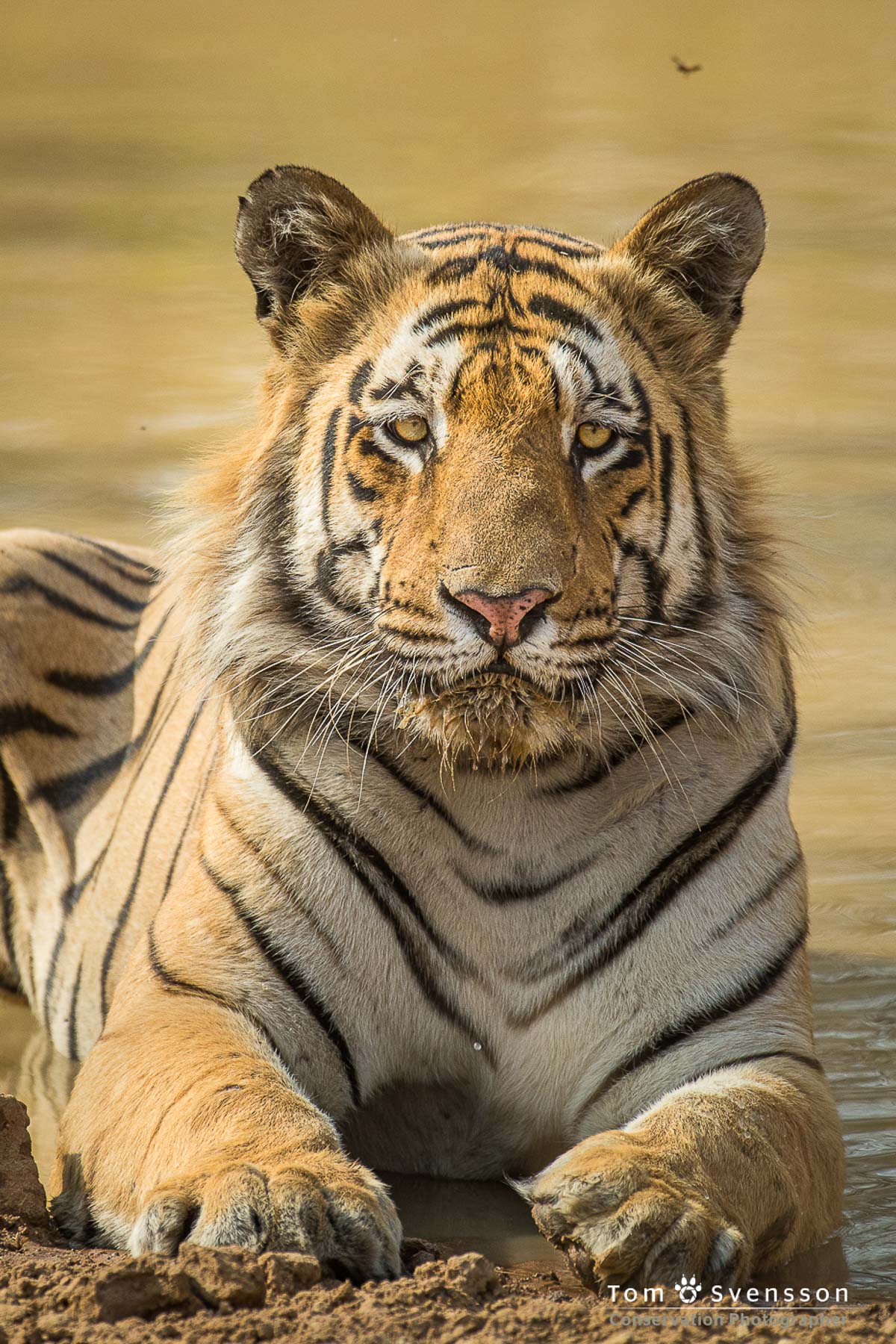
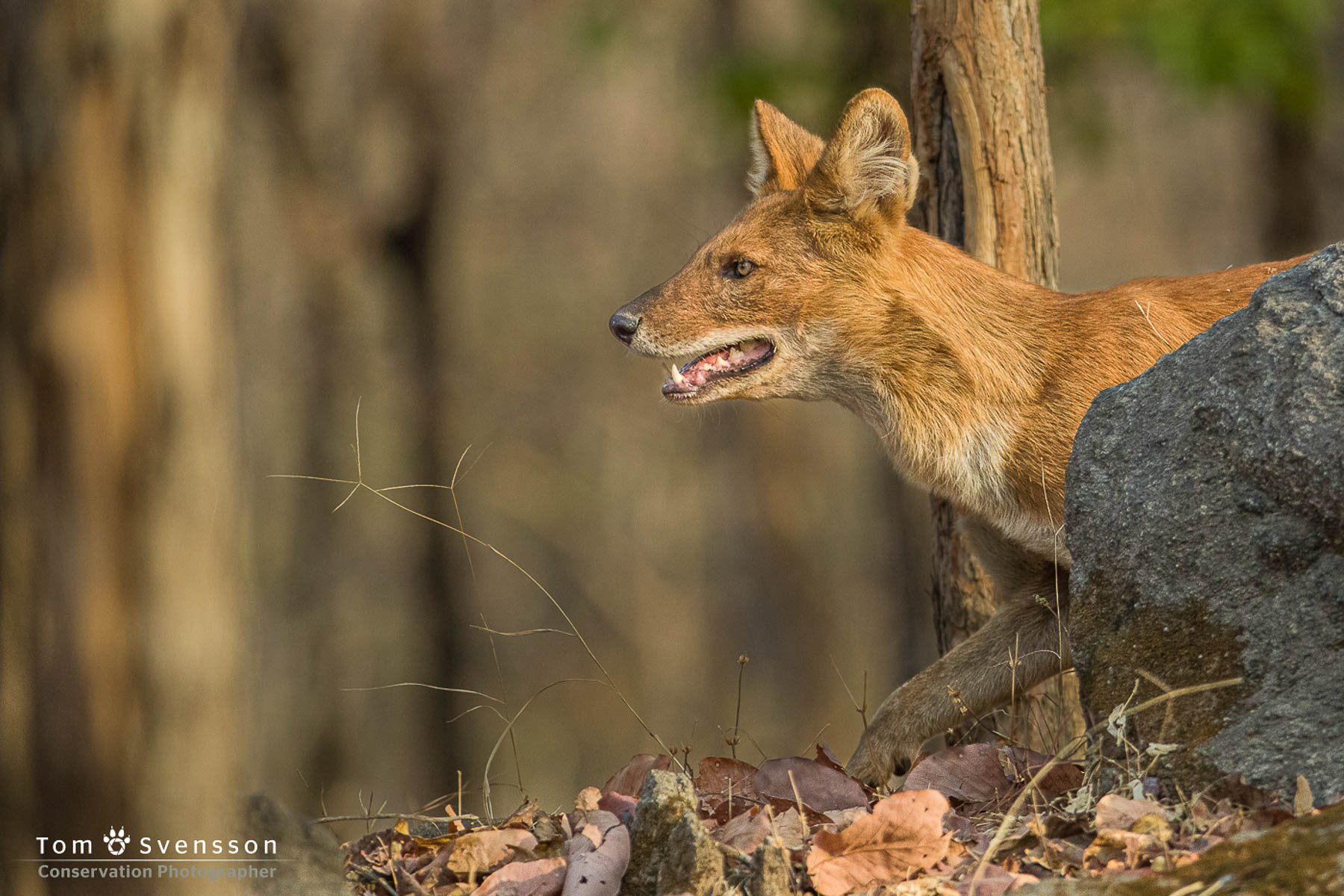
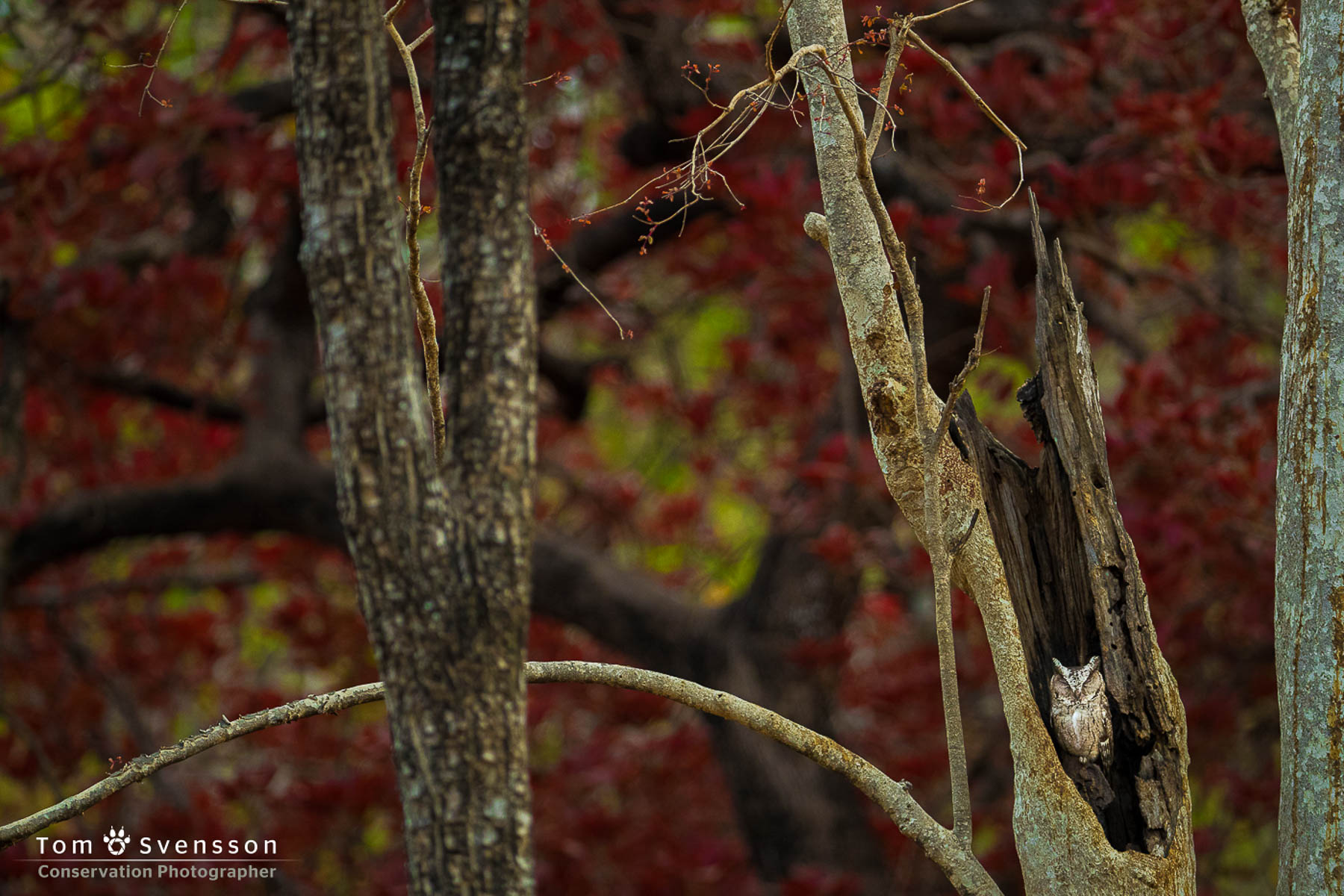
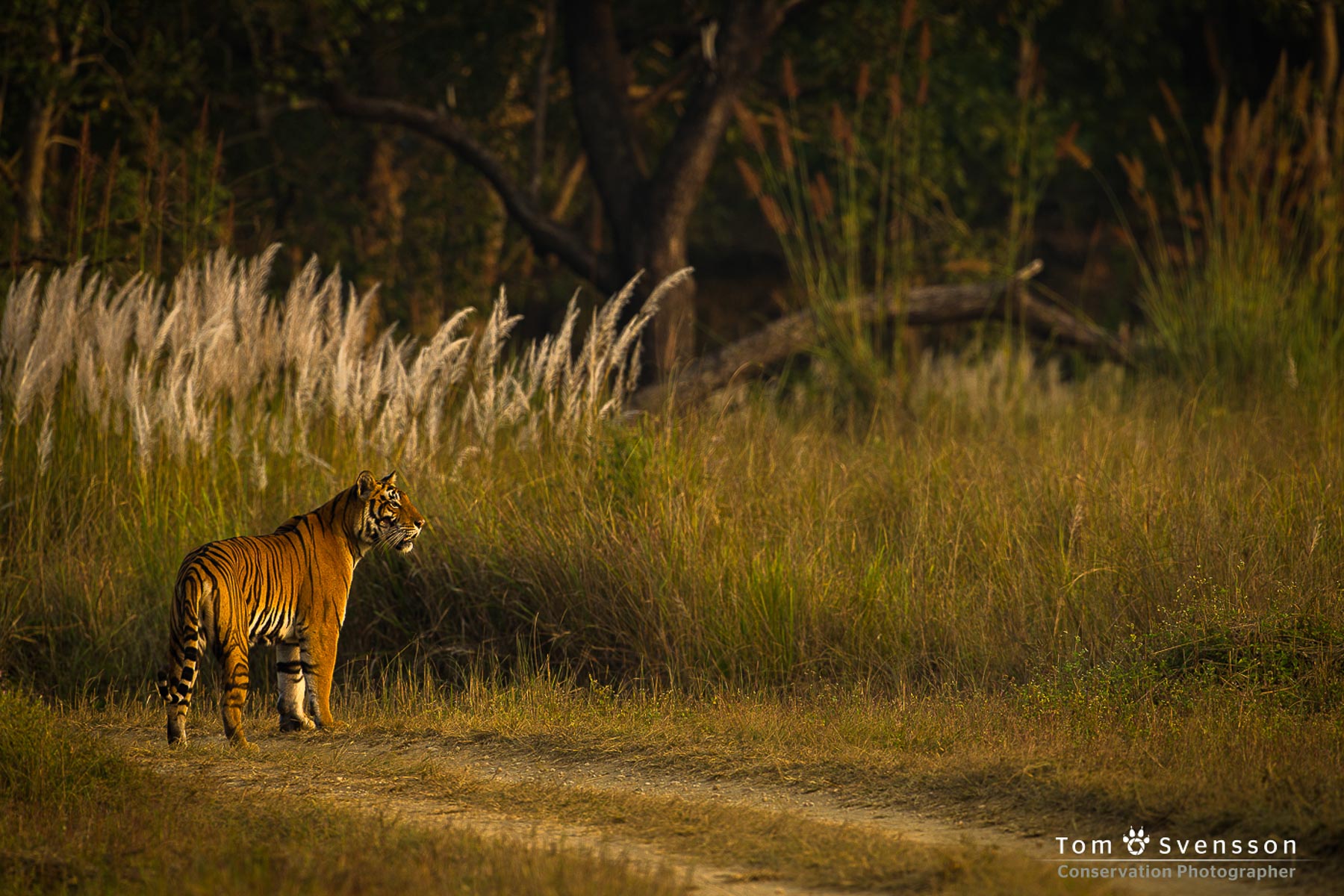
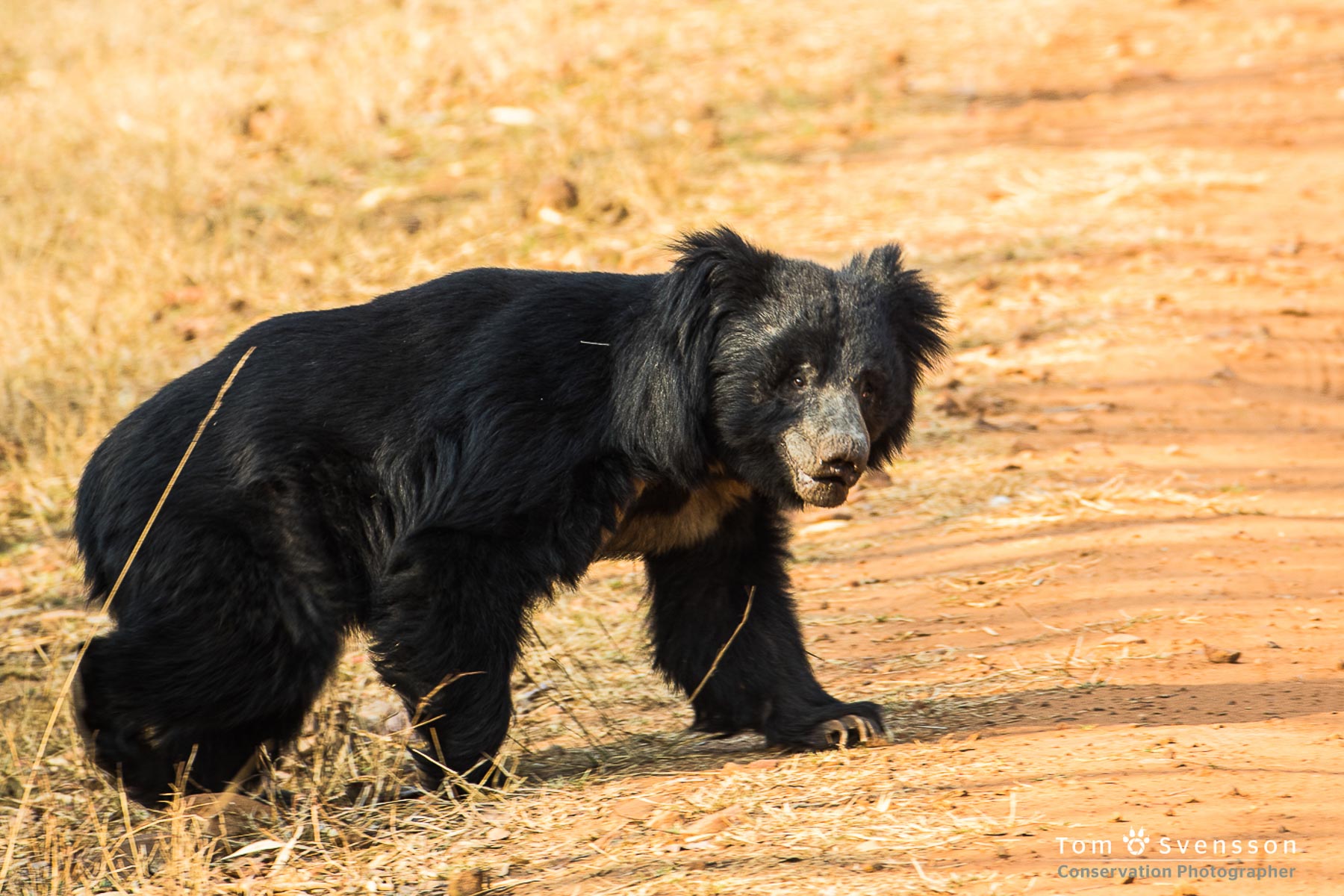
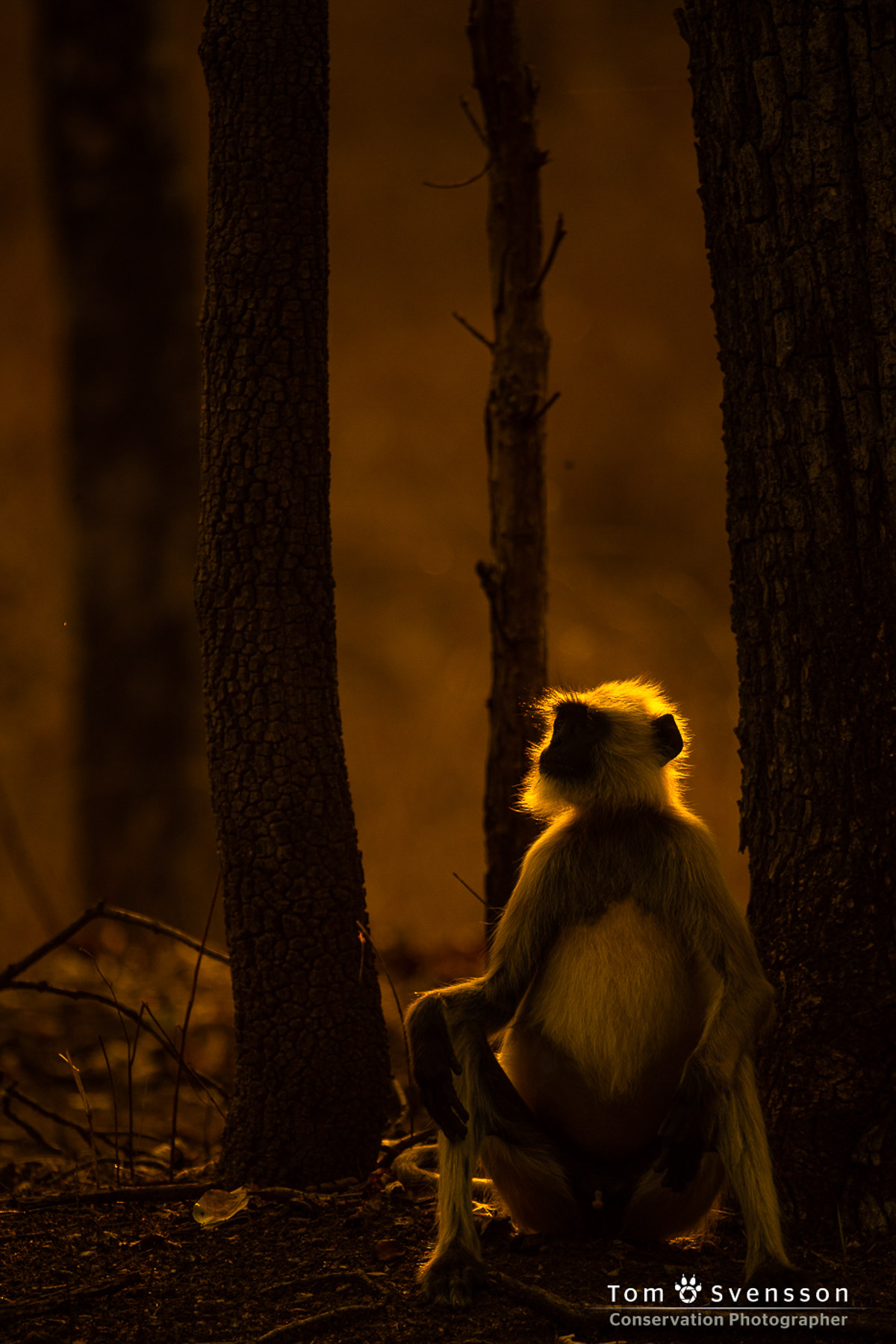
14 days in India – a magnificent country offering incredible photographic opportunities, rich wildlife, and stunning natural beauty. Read more.
AY 1 (April 3) – ARRIVAL IN DELHI
During the day, you’ll arrive in Delhi and check in at the first-class Hotel Pride Plaza. The rest of the day is at leisure. In the evening, we gather for a welcome dinner in the hotel restaurant. (D)
DAY 2 (April 4) – TADOBA NATIONAL PARK
Early in the morning, we fly to Nagpur, followed by a scenic drive to Tadoba National Park. After check-in, it’s time for our first safari of the trip. We are introduced to Tadoba’s beautiful landscape, which over the coming days will offer countless photo opportunities and unforgettable wildlife encounters. In the evening, we share a group dinner, reflecting on our first impressions of the Jungle Book world. (B, L, D)

DAY 3–4 (April 5–6) – SAFARI IN TADOBA NATIONAL PARK
Two thrilling days await, filled with safari adventures in one of India’s best tiger reserves. We enjoy morning and afternoon safaris, with great chances of seeing and photographing tigers. The reserve offers dense forests, open grasslands, and shimmering lakes – a paradise for both wildlife and photographers. Leopards, wild dogs, deer, gaur, monkeys, and over 200 bird species also roam these lands. (B, L, D)
DAY 5 (April 7) – MORNING SAFARI & TRANSFER TO PENCH
After one last safari in Tadoba, we continue our journey to Pench National Park. During the drive through the Indian countryside, keep your cameras ready – subjects can appear at any moment. In the afternoon, we check in at the first-class Tuli Tiger Corridor. There’s time for photo editing and review of our first images. Tom will be available for advice and preparation before the next safaris. (B, L, D)

DAY 6–7 (April 8–9) – SAFARI IN PENCH NATIONAL PARK
With excitement in the air, we pass through the gates of Pench National Park. The rolling landscape, cool morning air, and light filtering through the trees create magical photographic conditions. Keep your eyes open — perhaps a leopard is basking in the sun or a tiger moves along the slopes.
After the morning safari, there’s time to relax by the pool or edit photos before lunch. In the afternoon, we set out again — always ready for the jungle’s secrets. Maybe we’ll see a tigress with her cubs emerging from the shadows — a moment to cherish for life. Evenings end with dinner and, if time allows, image review sessions. (B, L, D)
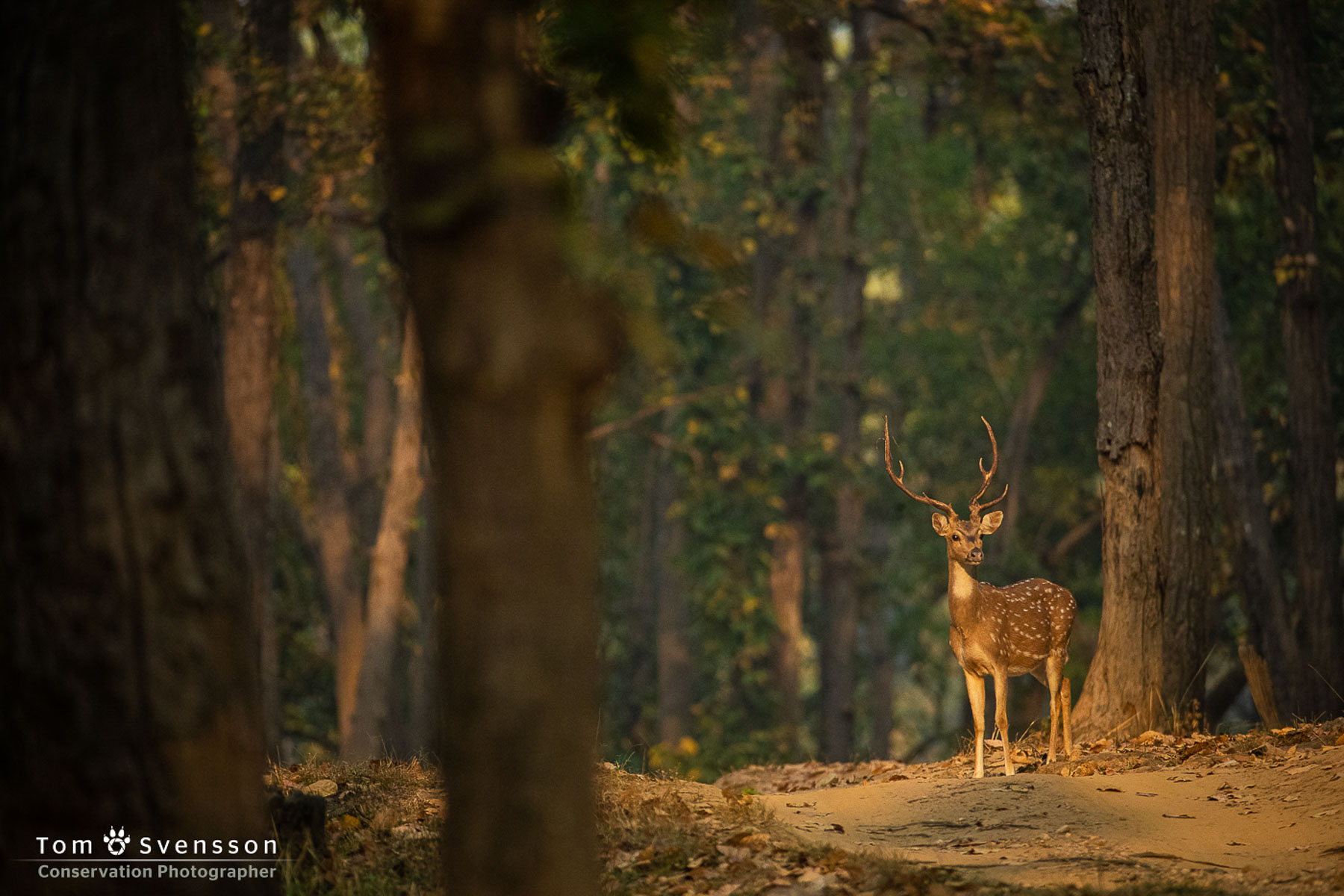
DAY 8 (April 10) – MORNING SAFARI & TRANSFER TO KANHA
After another morning safari, we continue to Kanha National Park. The drive takes us through a lively landscape full of photographic opportunities. After check-in at our lodge, the afternoon is dedicated to photo editing and review of images from Pench. Tom shares valuable tips and guidance ahead of the coming days of photography in Kanha’s unique environments. (B, L, D)
DAY 9–10 (April 11–12) – SAFARI IN KANHA NATIONAL PARK
Early each morning, we head out for safari in Kanha, one of India’s most beautiful and diverse reserves. Here we may encounter spotted deer, langurs, gaur, and — with a bit of luck — the Bengal tiger.
The sunrise over the open meadows, the sal forests bathed in soft morning light — it’s every nature photographer’s dream. Tom is with us throughout, sharing his expertise on animal behavior and how best to capture those fleeting moments.
After the morning safari, we rest, enjoy lunch, and perhaps take a swim before heading out again. The afternoon safarioffers golden light — perfect for tiger photography. We might even spot the elusive sloth bear. (B, L, D)

DAY 11 (April 13) – TRANSFER TO BANDHAVGARH NATIONAL PARK
We begin the day with one last safari in Kanha before traveling onward to our final destination: Bandhavgarh National Park — known as one of India’s most tiger-dense areas.
After check-in at our lodge, we review our growing collection of images. Tom demonstrates how to further enhance photos using Lightroom. The day ends with dinner, accompanied by the sounds of the jungle. (B, L, D)
DAY 12–14 (April 14–16) – SAFARI IN BANDHAVGARH NATIONAL PARK
In the crisp morning air, we drive through the gates of Bandhavgarh. Together with Tom and our experienced drivers, we search for tracks, footprints, and alarm calls — anything that might lead us to a tiger.
Photo opportunities abound. Perhaps we’ll encounter a troop of langurs swinging through the trees, or hear a sambar deer’s warning call breaking the silence — a sure sign a tiger is near.
And then — out of nowhere — a tigress steps onto the road ahead of us. She moves calmly, confidently. Cameras burst into action. Behind her, three tiny cubs follow. A moment we will never forget.
In the afternoons, we continue to hone our photography skills. Tom shares his expertise, while our local birding specialist Rachit introduces us to the park’s rich avian life. Evenings are filled with dinner, image editing, and review sessions, culminating in a final farewell dinner where we celebrate the journey’s highlights. (B, L, D)

DAY 15 (April 17) – HOMEWARD JOURNEY
After our final safari, we travel to Jabalpur and continue to Delhi’s international airport. The return trip to Sweden is on your own arrangement — with memory cards and minds filled with images, moments, and experiences from the heart of the jungle. (B, L)
PHOTOGRAPHER
PHOTOGRAPHER
TOM SVENSSON • Conservation Photographer
Tom Svensson is a world-renowned conservation photographer, born in Denmark, raised in Sweden, and now based in Fjällbacka.
Tom’s greatest passion in life is nature conservation, and as he says: “I don’t do it for myself, but for my children and future grandchildren. If we don’t act now, it will be late for them to do anything themselves.”
Tom’s strength as a photographer lies in his ability to capture images that move people and make a difference. Photography, for him, is a tool for change — because the power of an image is immense. In this field, he is considered one of the world’s leading photographers.
Tom is a member of Naturfotograferna/N, and the only Swede ever selected for the International Environment Photographers Association (IEPA). He is part of Canon’s Nordic Ambassador Program and was recently appointed a Global Manfrotto Ambassador.
For more information, visit www.tomsvensson.se.
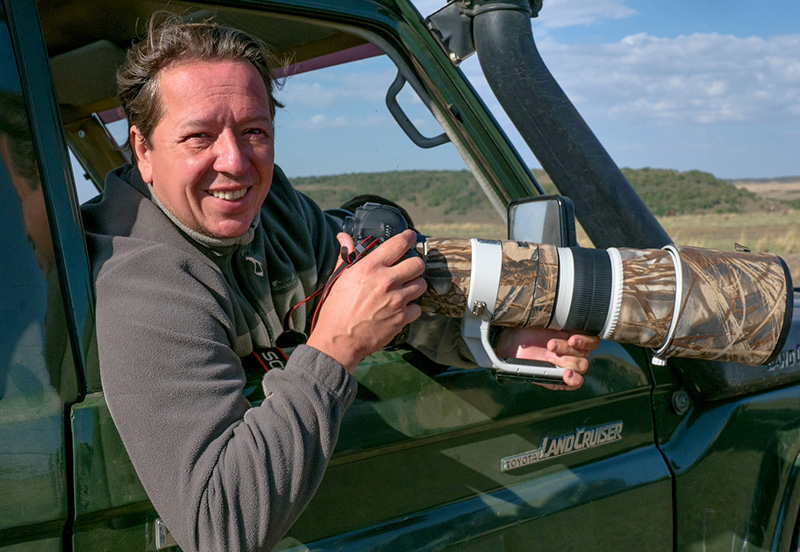
Read more about photographer Tom Svensson.
Tom Svensson is a world-renowned conservation photographer, born in Denmark, raised in Sweden, and now based in Fjällbacka.
Tom’s greatest passion in life is nature conservation, and as he says:
“I don’t do it for myself, but for my children and future grandchildren. If we don’t act now, it will be too late for them to do anything themselves.”
Tom’s strength as a photographer lies in his ability to capture images that move people and make a difference. Photography, for him, is a tool for change — because the power of an image is immense. In this field, he is considered one of the world’s leading photographers.
Tom is a member of Naturfotograferna/N, and the only Swede ever selected for the International Environment Photographers Association (IEPA). He is part of Canon’s Nordic Ambassador Program and was recently appointed a Global Manfrotto Ambassador.
For more information, visit www.tomsvensson.se.
LODGES
LODGES
PRICE, FACTS & BOOKING
PRICE, FACTS & BOOKING
PRICE
Price per person: USD 7.500
Priset inkluderar:
- Samtliga transporter enligt program.
- Boende i del i dubbelrum.
- Måltider enligt program. (anges med F= Frukost, L=Lunch, M=Middag).
- Safaris i jeepar enligt program.
- Medverkan av Tom Svensson under hela resan.
- Lokal naturguide under resan.
- Lokala rangers i parkerna.
- Dricks, förutom till den lokala naturguiden.
- Hotell- och andra skatter.
Priset inkluderar ej:
-
Transportation to India.
-
Single room supplement: USD 1.500
-
Personal expenses, such as beverages, phone calls, etc.
-
Tips for the local naturalist guide, approximately USD 10 per day.
-
Cancellation protection and travel insurance – see our website under “Other Information.”
FLYG
If you would like assistance booking your flight to Delhi, we are happy to help. You should plan to arrive in Delhi no later than 6:00 PM on April 3, and your return flight should not depart earlier than 11:00 PM on April 17.
If you would like help arranging your flight, please indicate this when making your booking on the booking page, or contact us by phone at +46-70 180 90 99 or by email at info@zoomphototours.com
FACTS
Target group: Photographers interested in developing their skills in wildlife and nature photography.
Minimum/maximum participants: 8 / 12.
Other information: For more details about Zoom Fotoresor, terms and conditions, etc., please visit our website under “Other Information.”
CAMERAEQUPIMENT
-
Digital camera
-
Telephoto lens, preferably up to 500 mm
-
70–200 mm lens
-
Wide-angle lens, e.g. 24–70 mm
-
Monopod or tripod
-
Laptop with Photoshop or Lightroom
-
Extra batteries, chargers, and accessories
BOOKING
You can book the trip by clicking the button below.
You are also welcome to call us at +46 70 180 90 99 or email us at info@zoomphototours.com
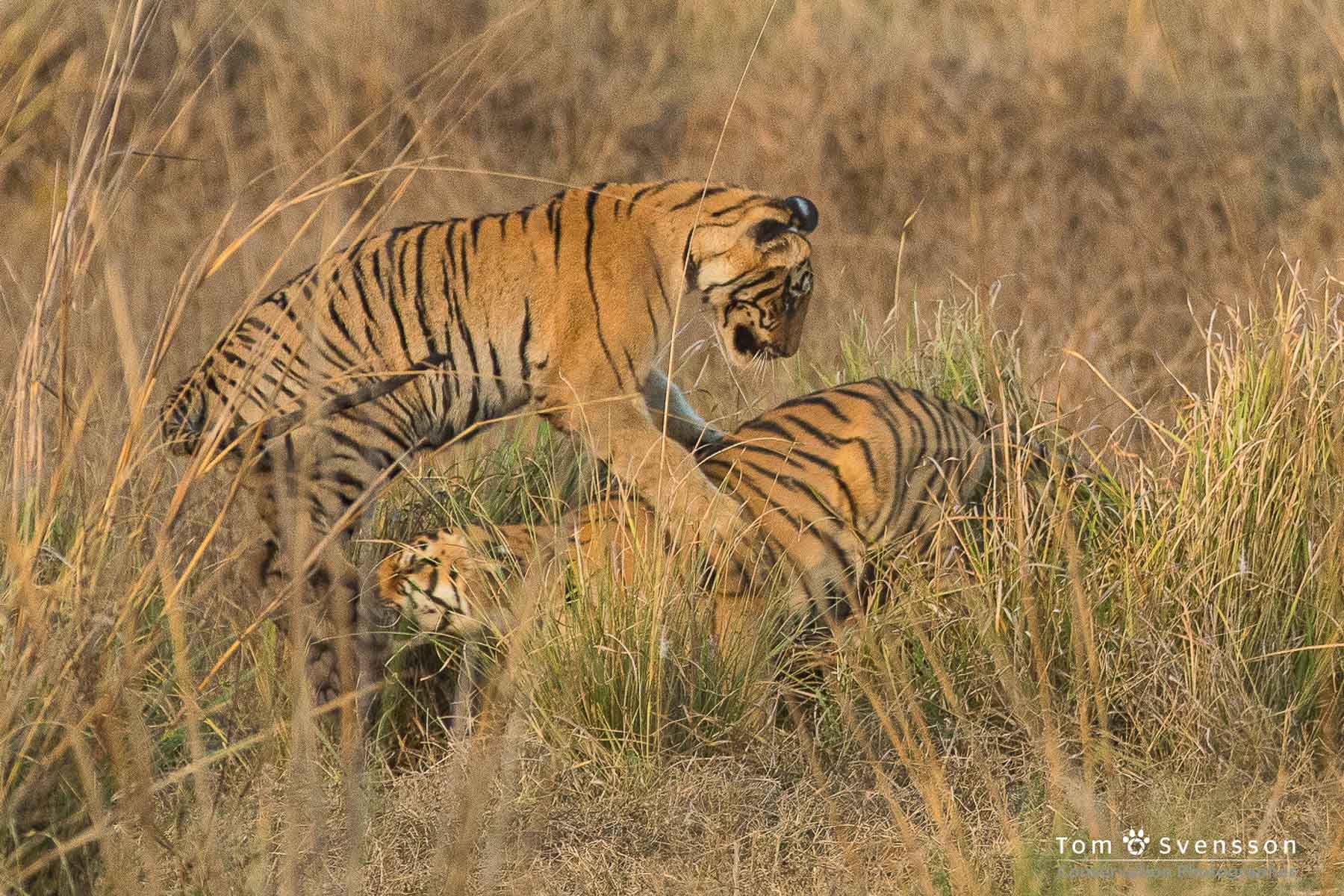
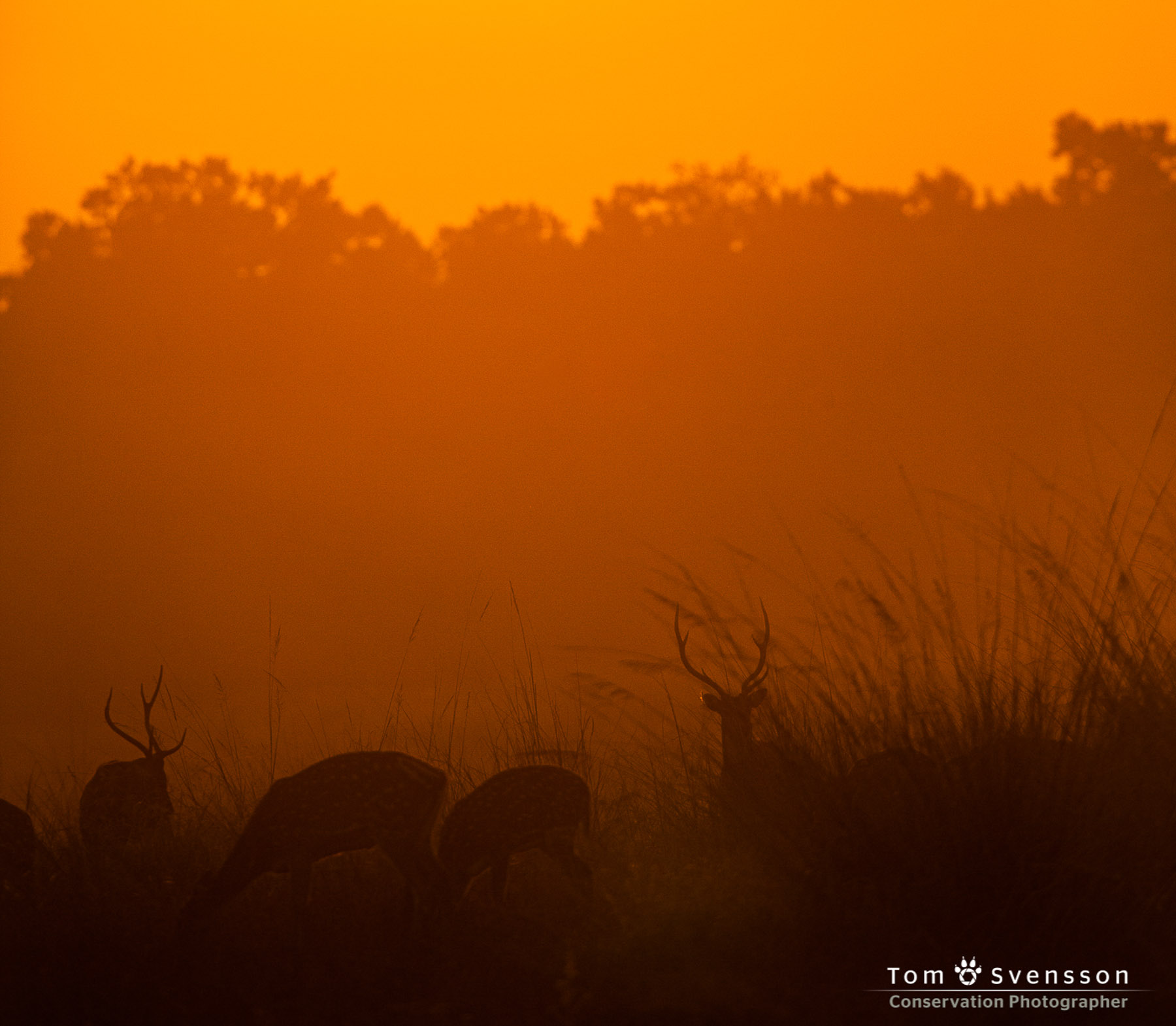
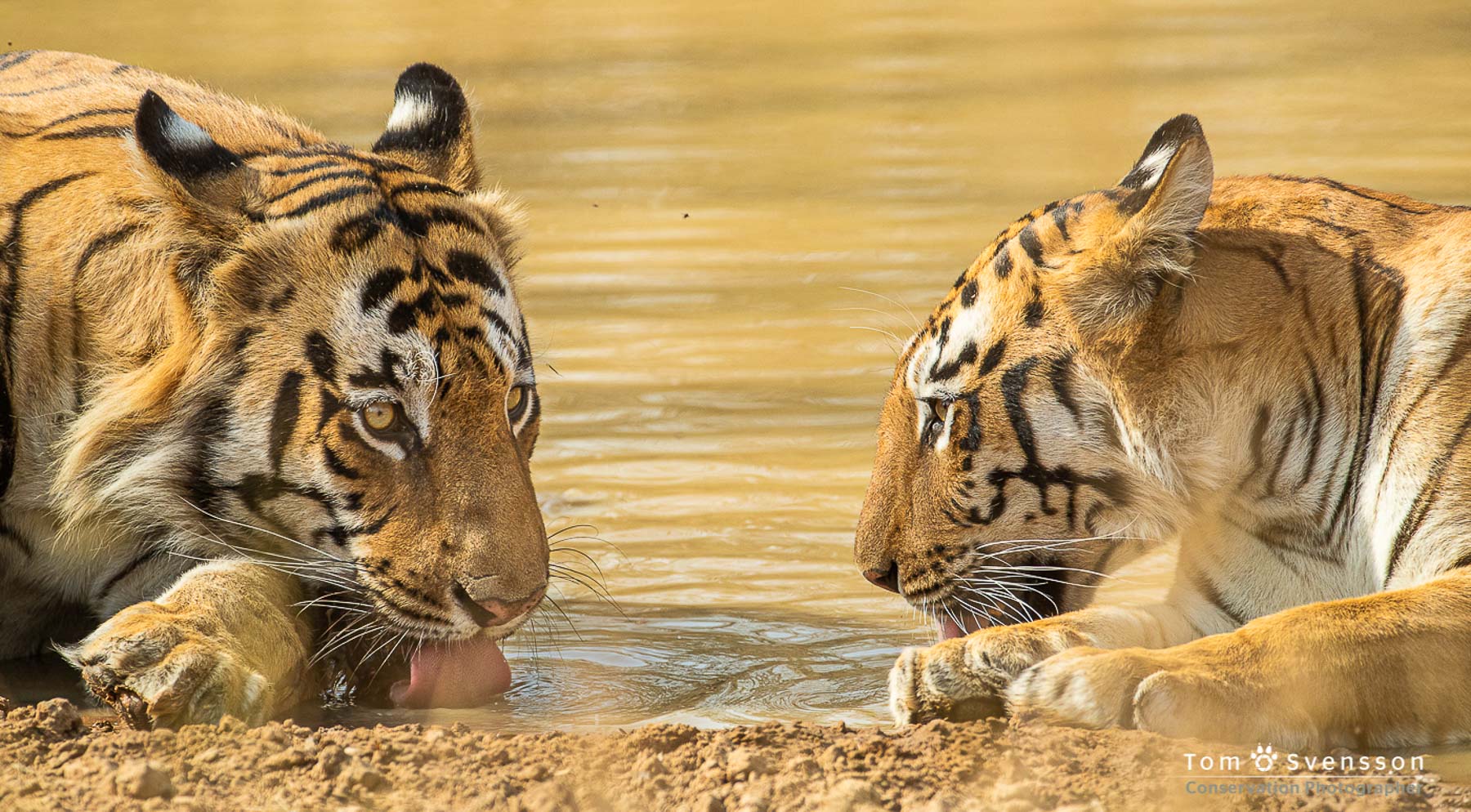
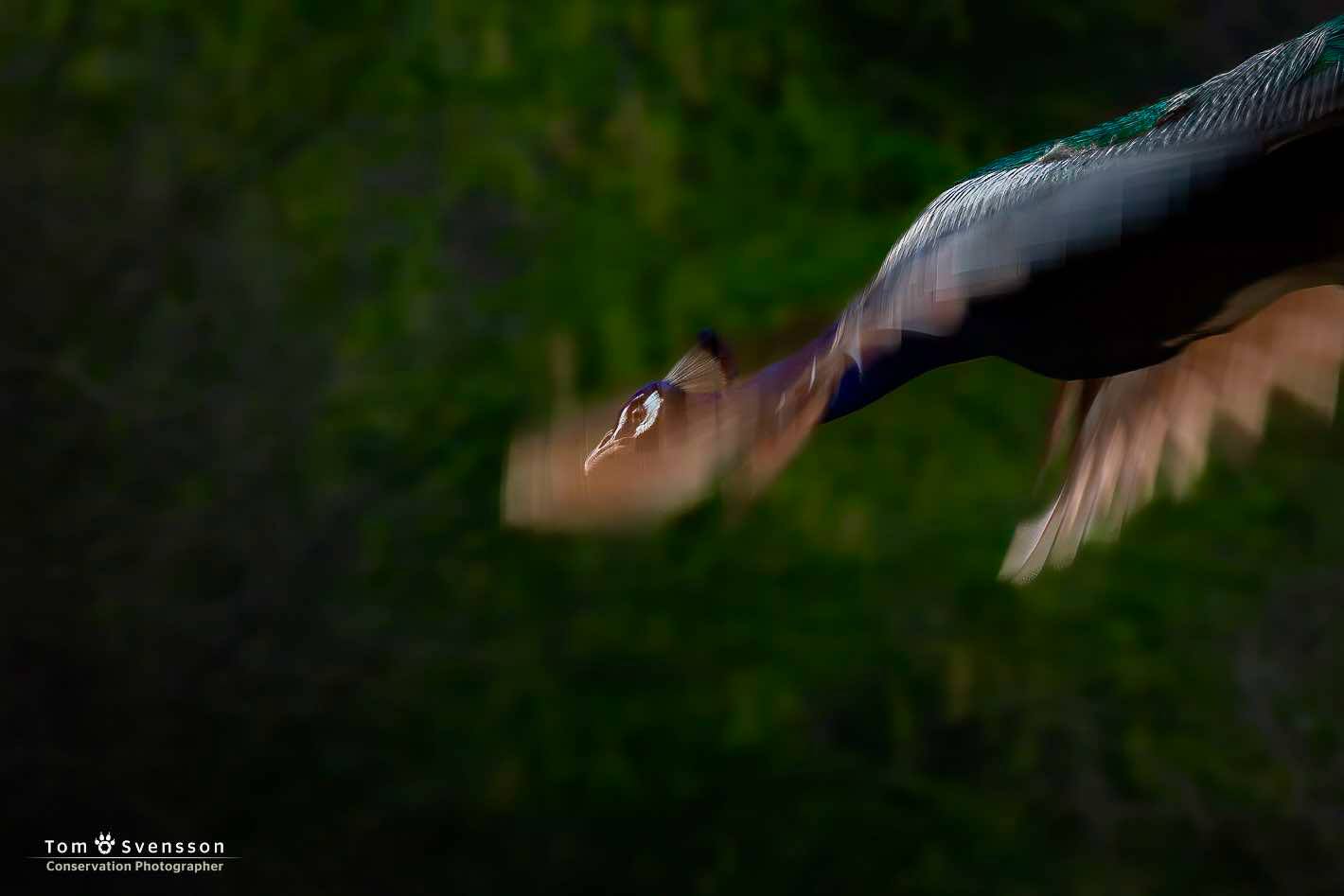
Photo: Tom Svensson & Hans Elmqvist

